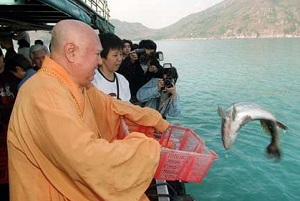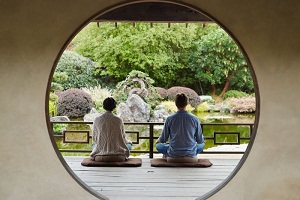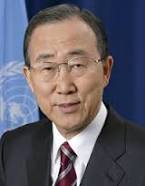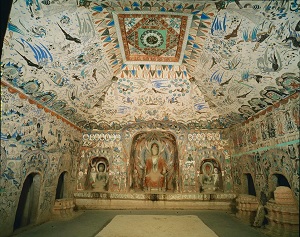Dharma companions is a blog focusing on Dharma activities, information dissemination and bringing awareness to the multifaceted aspects of Buddhism for the community from Shah Alam Buddhist Society (SABS). Postings should be of interest to Buddhist and anyone who seeks information on Buddhism. As the title suggest, we also aim to be a companion to those who seeks our company in this path that we undertake. May you be well, happy and peaceful.
Saturday, May 28, 2016
Dhammapada v 3 and 4
Labels:
Dhammapada
Location:
Shah Alam, Selangor, Malaysia
Hong Kong Buddhists’ release of animals into wild needs regulating, Kadoorie Farm says
South China Morning Post, 16 May, 2016
Conservationists say release of captured animals to earn merit causes suffering, with many of them dying, and releasing non-native species threatens indigenous wildlife through disease
Hong Kong, China -- Hong Kong needs to regulate the practice of mercy release – the release of captured animals into the wild – if it is serious about protecting biodiversity, says a Hong Kong nature organisation. The practice is common among Buddhists, who believe it brings good karma.
 A Buddhist ceremony in which fish were released off Sai Kung. Photo: Robert Ng
A Buddhist ceremony in which fish were released off Sai Kung. Photo: Robert NgKadoorie Farm and Botanic Garden says mercy release – also called fang sheng (life release) or merit release – which is practised throughout the year, including on Buddha’s birthday today, has created a thriving industry for those who trap, trade, and sell animals for release – mostly birds, fish, and turtles, with many taken from the wild to be sold for release. It says released animals – some of which are non-native – threaten the survival of native wildlife by spreading disease.
Labels:
Announcement
Location:
Shah Alam, Selangor, Malaysia
Friday, May 27, 2016
Avaranata Sutta , AN 6.86
"Endowed with these six qualities, a person is capable of alighting on the lawfulness, the rightness of skillful mental qualities even while listening to the true Dhamma. Which six?
"He is not endowed with a [present] kamma obstruction, a defilement obstruction, or a result-of-[past]-kamma obstruction; he has conviction, has the desire [to listen], and is discerning.
"Endowed with these six qualities, a person is capable of alighting on the lawfulness, the rightness of skillful mental qualities even while listening to the true Dhamma."
Labels:
Understanding
Location:
Shah Alam, Selangor, Malaysia
China - World's Most Populous Buddhist Nation
2014, 11 Feb - Asian Tribune
China is the world’s largest Buddhist country, in terms of its population and size. Buddhists account for more than 1 billion or about 80% of the total Chinese population of 1.4 billion in the year 2014. China accounts for 67% of the 1.6 billion total Buddhist population in the world. The magnitude of the Chinese Buddhist population is evident when compared to Japan which has the second highest Buddhist population of 122 million (122,022,837), which is 7.6% of the world’s total Buddhist population and about 09% of the Chinese Buddhist population. For purposes of comparison, the estimated Buddhist population of Sri Lanka is 14.9 million (70% of her population) which is a mere 1.4% of the Chinese Buddhist population and less than 1% of the world’s total Buddhist population.
China is the world’s largest Buddhist country, in terms of its population and size. Buddhists account for more than 1 billion or about 80% of the total Chinese population of 1.4 billion in the year 2014. China accounts for 67% of the 1.6 billion total Buddhist population in the world. The magnitude of the Chinese Buddhist population is evident when compared to Japan which has the second highest Buddhist population of 122 million (122,022,837), which is 7.6% of the world’s total Buddhist population and about 09% of the Chinese Buddhist population. For purposes of comparison, the estimated Buddhist population of Sri Lanka is 14.9 million (70% of her population) which is a mere 1.4% of the Chinese Buddhist population and less than 1% of the world’s total Buddhist population.
Location:
China
Thursday, May 26, 2016
Brutal murder of Bangladeshi monk - letter form Buddhist Global Relief to Bangladesh
The Buddhist Channel, May 20, 2016
As a senior American Buddhist monk and founder of a global relief organization with several projects in Bangladesh, I write to you with deep concern about the security of religious minorities in your country. Like so many people around the world, I was shocked to read of the brutal murder of a Buddhist monk just 340 km from Dhaka, which took place on May 14th.
I also learned that this was not an isolated incident. Other people of minority religions - Buddhists, Hindus, Christians, and even non-Sunni Muslims - have been brutally killed in Bangladesh over the past year. This is appalling and an affront to the inherent rights of people to peacefully practice the religion of their choice.
It is necessary that the government of Bangladesh take effective action to prevent this scourge from spreading. I suggest four measures:
(1) A relentless investigation must be made to find the killers of the venerable monk and bring them to justice. The trial must be fair and transparent, to prevent innocent people from being charged with a crime they did not commit in order to give the impression action has been taken.
(2) Places of worship of minority religions must be given police protection, especially in areas at risk of attack by Islamist militants. The monk had received death threats before the murder and he should have been provided with protection.
(3) The Islamist groups that advocate violence against other religions and spread intolerance must be opposed and suppressed.
(4) To improve people’s ways of thinking, they must be educated about the importance of religious tolerance and the value of religious harmony for national development. Education should begin in the schools, with young children. Only when people respect each other can they flourish together.
I sincerely hope you will act upon these suggestions, giving immediate priority to the first two in order to prevent repetitions of the murder that occurred a few days ago.
Thank you very much for your attention to this letter.
Sincerely yours,
Ven. Bhikkhu Bodhi
Chanting for oneself welfare
Labels:
Understanding
Location:
Shah Alam, Selangor, Malaysia
Infatuation with the World
Labels:
Teacher,
Understanding
Location:
Shah Alam, Selangor, Malaysia
Wednesday, May 25, 2016
Desires are like knives that stab our hearts
“…Having returned to the physical world with a new body, we are once again deluded and think that these new bodies are us, giving rise to the desire for the body to live a long time and to not age, be pained, get sick, or die. When these desires arise, stress and mental pain arise as well because these desires are like knives that stab our hearts. Every time desire arises, we will immediately feel dissatisfied, irritated, restless, worried, and feverish; we cannot sleep and lose our appetite trying to get what we want.
Labels:
Teacher,
Understanding
Location:
Shah Alam, Selangor, Malaysia
Tuesday, May 24, 2016
Thana Sutta, AN4.192
"It's through living together that a person's virtue may be known, and then only after a long period, not a short period; by one who is attentive, not by one who is inattentive; by one who is discerning, not by one who is not discerning.
"It's through dealing with a person that his purity may be known, and then only after a long period, not a short period; by one who is attentive, not by one who is inattentive; by one who is discerning, not by one who is not discerning."
Labels:
Understanding
Location:
Shah Alam, Selangor, Malaysia
What can neuroscience learn from Buddhist meditation?
by Lynne Malcolm and Olivia Willis, ABC Australia, 29 April 2016
Sydney, Australia -- Mindfulness has recently surged in popularity, but its modern application has ancient Buddhist roots. Lynne Malcolm and Olivia Willis find out what long-term meditators and neuroscientists can learn from each other.
 There's no shortage of press touting the benefits of mindfulness and meditation. It's increasingly popular in clinical therapy and for managing everyday stress. But what does science say about the centuries-old spiritual practice? And equally, what can the ancient Buddhist tradition teach neuroscientists about the brain?
There's no shortage of press touting the benefits of mindfulness and meditation. It's increasingly popular in clinical therapy and for managing everyday stress. But what does science say about the centuries-old spiritual practice? And equally, what can the ancient Buddhist tradition teach neuroscientists about the brain?In an effort to find out, a group of meditation practitioners, psychologists and neuroscientists gathered together for a weekend Zen retreat in rural New South Wales.
Labels:
Meditation,
Skillful Practice
Location:
Sydney NSW, Australia
Monday, May 23, 2016
World Buddhist Population: Pre-eminence of Mahayana Tradition
2014, 11 Feb - Asian Tribune
It is noteworthy that until about 2010, the estimates made of the Buddhist population of most countries in the world, especially of the traditionally Buddhist countries, have been grossly underestimated. This led to the marked underestimation of the total Buddhist population of the world. Information published not only in most websites, but also reported in nearly all encyclopedias, almanacs and other popular reference sources on population, emanating predominantly from the western world, has been highly misleading, deceptive and grossly inaccurate. Gross underestimation has been the order of the day until very recent times.
Labels:
Opinion
Location:
Shah Alam, Selangor, Malaysia
Sunday, May 22, 2016
Reach Out to Bridge Differences, Show Compassion on Global Scale, Secretary-General Urges in Message for Day of Vesak
by Ban Ki-Moon, United Nations Secretary-General, The Buddhist Channel, May 17, 2016New York -- The following is UN Secretary-General Ban Ki-moon’s message on the Day of Vesak, to be observed on 20 May. At this time of mass population movements, violent conflicts, atrocious human rights abuses and hateful rhetoric aimed at dividing communities, the sacred commemoration of the Day of Vesak offers an invaluable opportunity to reflect on how the teachings of Buddhism can help the international community tackle pressing challenges. At this time of mass population movements, violent conflicts, atrocious human rights abuses and hateful rhetoric aimed at dividing communities, the sacred commemoration of the Day of Vesak offers an invaluable opportunity to reflect on how the teachings of Buddhism can help the international community tackle pressing challenges.The fundamental equality of all people, the imperative to seek justice, and the interdependence of life and the environment are more than abstract concepts for scholars to debate; they are living guidelines for Buddhists and others navigating the path to a better future. One Sutra tells the story of Srimala, a woman who pledged to help all those suffering from injustice, illness, poverty or disaster. This spirit of solidarity can animate our global efforts to realize the 2030 Agenda for Sustainable Development, carry out the Paris Agreement on climate change, and promote human rights while advancing human dignity worldwide. The actions of Srimala also illustrate the primary role that women can play in advocating for peace, justice and human rights. Gender equality and the empowerment of women remain urgent priorities that will drive progress across the international agenda. In just a few weeks, the United Nations will convene the first-ever World Humanitarian Summit, where leaders will join activists and other partners to address the needs of millions of vulnerable people in crisis. Buddhists and individuals of all faiths who are concerned about the future of humanity can help advance the Summit’s aims to uphold humanitarian law, protect civilians in conflict, and improve the global response to emergencies. On this Day of Vesak, let us pledge to reach out to bridge differences, foster a sense of belonging, and show compassion on a global scale for the sake of our common future. |
Labels:
Announcement,
Inspirational
Location:
New York, NY, USA
Beginning May 7, the Getty Research Institute will show Buddhist artwork in the show ‘Cave Temples of Dunhuang’
By Alexandra Wolfe, WSJ, Apr 29, 2016
Los Angeles, CA (USA) -- For six centuries, nearly 500 caves filled with troves of art sat practically untouched along China’s Silk Road. Little known outside China, they contained thousands of Buddhist sculptures and manuscripts and acres of murals.
 A view of the interior of cave 285, created in the Western Wei Dynasty (535-556 C.E.) Photo: Dunhuang Academy
A view of the interior of cave 285, created in the Western Wei Dynasty (535-556 C.E.) Photo: Dunhuang Academy On May 7, the new exhibit “Cave Temples of Dunhuang” at the Getty Center in Los Angeles will display artworks and replicas of three caves, selected from hundreds hewed out of cliffs from the fourth to the 14th centuries near Dunhuang, a city more than 1,200 miles west of Beijing at the edge of the Gobi Desert.
Labels:
Announcement,
History
Location:
Los Angeles, CA, USA
Subscribe to:
Comments (Atom)
















